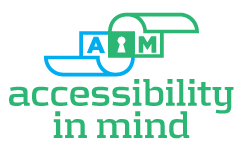Look here for answers to your specific questions about what makes a PDF document compliant with Section 508- but don't squeeze your brain too hard, as there's not much "specifying" going on. It all comes down to interpretation- what is "accessible" and "usable"?
Here's an excerpt from the regulation, the part that applies to remediating PDF documents:
§
1194.22 Web-based intranet and internet information and applications.
(a) A text equivalent for
every non-text element shall be provided (e.g., via "alt",
"longdesc", or in element content).
(b) Equivalent
alternatives for any multimedia presentation shall be synchronized with the
presentation.
(c) Web pages shall be
designed so that all information conveyed with color is also available without
color, for example from context or markup.
(d) Documents shall be
organized so they are readable without requiring an associated style sheet.
(e) Redundant text links
shall be provided for each active region of a server-side image map.
(f) Client-side image
maps shall be provided instead of server-side image maps except where the
regions cannot be defined with an available geometric shape.
(g) Row and column
headers shall be identified for data tables.
(h) Markup shall be used
to associate data cells and header cells for data tables that have two or more
logical levels of row or column headers.
(i) Frames shall be
titled with text that facilitates frame identification and navigation.
(j) Pages shall be
designed to avoid causing the screen to flicker with a frequency greater than 2
Hz and lower than 55 Hz.
(k) A text-only page,
with equivalent information or functionality, shall be provided to make a web
site comply with the provisions of this part, when compliance cannot be
accomplished in any other way. The content of the text-only page shall be
updated whenever the primary page changes.
(l) When pages utilize
scripting languages to display content, or to create interface elements, the
information provided by the script shall be identified with functional text
that can be read by assistive technology.
(m) When a web page
requires that an applet, plug-in or other application be present on the client
system to interpret page content, the page must provide a link to a plug-in or
applet that complies with §1194.21(a) through (l).
(n) When electronic forms
are designed to be completed on-line, the form shall allow people using
assistive technology to access the information, field elements, and
functionality required for completion and submission of the form, including all
directions and cues.
(o) A method shall be
provided that permits users to skip repetitive navigation links.
(p) When a timed response
is required, the user shall be alerted and given sufficient time to indicate
more time is required.


